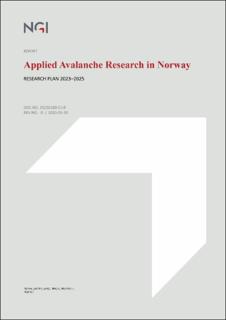| dc.description.abstract | Snow avalanches are a frequent and significant natural hazard in Norway. Each year, avalanche events result in fatalities, evacuations, interruptions, and damage to infrastructure networks such as roads, railways, and electrical transmission lines. This combines to a substantial impact on the livelihoods of the people living and working in mountainous areas or also along the fjords in Norway. Persistent avalanche hazard in steep terrain is a major factor considered during land-use planning and development. During the snow season, variations in the avalanche danger identified in regional and site-specific bulletins influence the operation of the transportation networks and the safety of workers in these areas. Applied research on avalanches and their societal impacts has been conducted at the Norwegian Geotechnical Institute (NGI) since 1973. The year 2023 will mark the 50 years anniversary of this research project. The research has been funded in part by an annual grant from the Norwegian parliament administered by the Norwegian Water Resources and Energy Directorate (NVE). Recent research activities have improved our understanding of avalanche formation, movement and impacts from avalanches. For example, enhanced knowledge of the individual processes leading to avalanche initiation, avalanche dynamics and avalanche impacts have been applied to develop tools for prediction of avalanche events, runout distance and impact pressures. While much has been accomplished within the avalanche research community in recent years, many key questions remain. Research in this area becomes increasingly important as a changing climate will vary the frequency and behaviour of avalanche events. In addition, the transfer of resent research outcomes into common practise is an ongoing challenge which needs continuous attention. This project plan will: Present the research goals for the 2023–2025 period. Outline the project organisation. Present the work-package structure and specific research tasks to be undertaken by the applied avalanche research group at NGI over the next three years. | en_US |
